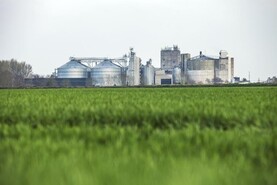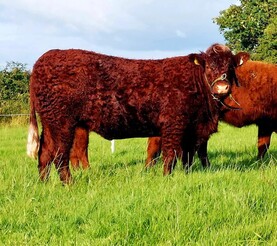There is something about Tullamore Show that gives you a really good feeling about rural life, food and farming. It’s the eclectic mix of music, jiving, cattle, and real farming businesses that brings a certain honesty surrounding those that have a real passion for animals. Even if the hotly contested show ring winners are not winners in everyone’s eyes, it almost doesn’t matter in Tullamore.
The organisers are really appreciative of the effort that stand holders go to when setting up camp for the one-day extravaganza. Their smiles, helpful words and can-do attitude make Tullamore Livestock Show one of the best shows in the country. When you meet someone with a buggy and three kids from west Cork at 7am on their way in the gate, it shows the effort some make to attend.
Tillage farmers
Without doubt, the biggest concern on Sunday was from tillage farmers. On our stand, I spoke to many dairy, suckler and sheep farmers and while there are darker clouds on the horizon for those sectors, most have had a half decent 2023 and some still have a 2022 cushion to fall back on.
In contrast, the tillage farmers are having a rotten 2023.
Winter crops
Many winter crops did not get planted and this, coupled with the nitrates debacle which essentially is turning out to be a land rental price gaming machine, means late 2022 and early 2023 got off to a bad start. Now a torturous harvest is leaving some farmers in a very difficult position. One farmer pleaded with me for honesty.
To paraphrase what he and his wife said on Sunday – they are surrounded by dairy farmers who are paying more for rented land and they lost 30% of their rented land in 2023, so they are in a sort of business limbo.
They have a relatively new combine, so repayments are high and they need to change a tractor. Yes they could lease out some of their own tillage land, but that would leave them tight on acres for the tillage enterprise and escalate fixed costs.
When faced with tough decisions like this on real farms where a young family is gathered around looking for answers with long drawn faces, it makes you seriously think about where policy is driving the industry.
The intention might be to improve water quality, but the reality is all that is happening is those with greater purchasing power are growing their business.
This dilutes existing livestock over a greater area and whether the additional land farmed is costly or not, it matters not for the dairy farmer.
Why? Because it allows for status quo on cow numbers and makes best use of high-cost fixed facilities like milking parlours and slurry storage that need to be paid back.
Net effect
The net effect is those competing for this type of land (like the tillage sector) lose out and move enterprise, go part-time farming or the next generation decides there is not enough for everyone and leaves.
The tillage enterprise is taking the brunt of the pain this year as family finances crash. Malting premiums on barley are no longer possible as weather causes harvesting havoc. The straw crop is reducing in value every day that the harvest agony is prolonged.
Diversity
For an Irish farming industry that needs more diversity in sectors, the opposite is actually happening before our eyes. There were other tillage concerns aired also; particularly around the acre for acre forage crop to grass lie-back ratio (see p13).
Many farmers were not made aware of this rule until recently and now they can’t buy store lambs and will perhaps need to look to other forage options. So again, a potentially positive action that farmers could take is hindered by unnecessary and impractical regulation.
So while the tillage concerns were real, the positives from last Sunday have to be the passion, hard work and dedication.
These qualities shine so bright for a livestock sector that engages and trains so many young people into real life and farm skills, not the digital make-believe fantasy world that is capturing so many young people.






 This is a subscriber-only article
This is a subscriber-only article










SHARING OPTIONS: